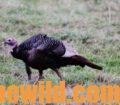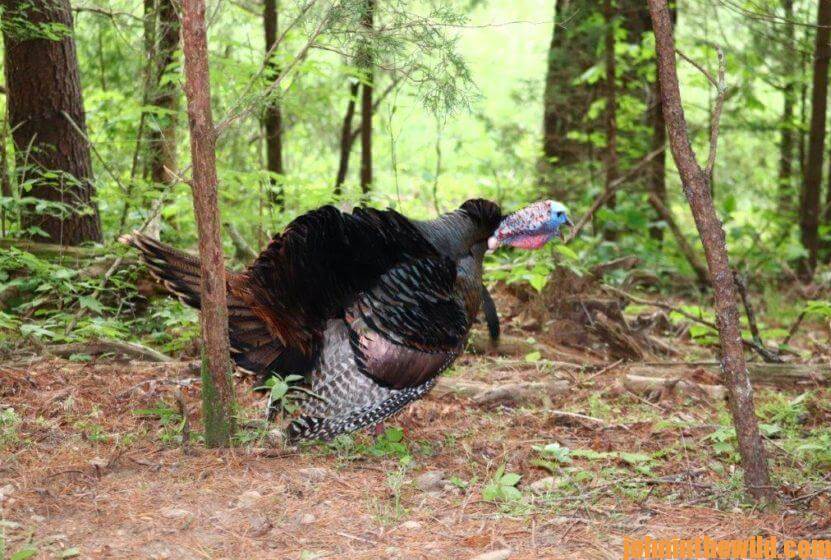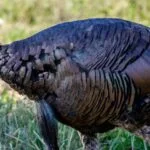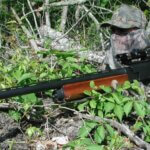Editor’s Note: With turkey-hunting season starting March 6, 2021, in Florida, March 15 in Mississippi, and March 20, 2021 in other southern states and continuing in South Carolina until May 10, Texas until May 16, and many northern states like New York and Minnesota and western states such as Washington, Wyoming and South Dakota until May 31, 2021, you need to get ready for turkey season now. The key to taking a gobbler is not your calling ability, your camo, the power of your shotgun or the number of turkeys on the property. To bag the toughest toms, you must know what a turkey is planning to do before he does it. One of the greatest turkey hunters who ever lived was “Uncle Roy” Moorer of Evergreen, Alabama. When I met Uncle Roy many years ago before he passed away, he gave me the secret to bagging even the toughest of toms. “All you’ve got to do to take any turkey, no matter how tough he is to hunt, is know where that turkey wants to go, get there before he does and let him come to you.” Uncle Roy’s nephew told me, “The reason Uncle Roy has been able to bag over 500 turkeys in his lifetime was because he always knew what a turkey would do even before the bird knew.” To take tough toms, you’ve got to understand the mind of the turkey.
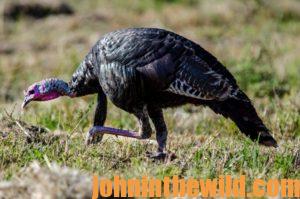 My longtime turkey-hunting friend Terry Rohm of Buckhead, Georgia, (Facebook page – https://www.facebook.com/terry.rohm.9), mentions that often a turkey hunter may believe he has spooked the tom he’s trying to take or someone else has spooked that turkey – if the bird starts to come to you and then for no apparent reason turns and begins walking away from you. Generally you’ll know this gobbler has been shot at before. He’s attempting to come in close enough for a hen to hear him and then lead her away to a cleared area where he can see her to make sure he won’t be shot at again.
My longtime turkey-hunting friend Terry Rohm of Buckhead, Georgia, (Facebook page – https://www.facebook.com/terry.rohm.9), mentions that often a turkey hunter may believe he has spooked the tom he’s trying to take or someone else has spooked that turkey – if the bird starts to come to you and then for no apparent reason turns and begins walking away from you. Generally you’ll know this gobbler has been shot at before. He’s attempting to come in close enough for a hen to hear him and then lead her away to a cleared area where he can see her to make sure he won’t be shot at again.
“When a turkey is walking away from you and gobbling, don’t use hen calls to talk to him to know his location,” Rohm advises. “Instead utilize owl calls or crow calls to keep the bird gobbling. Stay about 100 to 200 yards behind the turkey, until he gets to a spot and stops. Then he’s usually where he feels safe and secure, and where he believes he can see a hunter or a hen approach.
 “The best way to take this turkey is to use the terrain to get in close enough to him to take a shot. Although some hunters call this bushwhacking, I don’t. I think far more skill and woodsmanship are required to slip in close enough to take a shot at a turkey when you know he’s looking for you than to call him in to a spot. Once a turkey reaches this safety zone, often he’ll stay there for awhile. If you can’t get a shot because the bird is at 50 to 75 yards, and you can’t move any closer, then watch what the bird is doing. Generally that tom will walk back and forth in this safety zone. When he’s looking away from you, give a very light cluck or yelp. I believe the gobbler thinks the hen is just out of sight and that she’ll be able to see him and will come to him — if he walks 10 or 20 yards closer. That’s when you can take him. If you don’t bag the turkey, then return to that spot the next day. Don’t even try to call to this tom when he’s on the roost.
“The best way to take this turkey is to use the terrain to get in close enough to him to take a shot. Although some hunters call this bushwhacking, I don’t. I think far more skill and woodsmanship are required to slip in close enough to take a shot at a turkey when you know he’s looking for you than to call him in to a spot. Once a turkey reaches this safety zone, often he’ll stay there for awhile. If you can’t get a shot because the bird is at 50 to 75 yards, and you can’t move any closer, then watch what the bird is doing. Generally that tom will walk back and forth in this safety zone. When he’s looking away from you, give a very light cluck or yelp. I believe the gobbler thinks the hen is just out of sight and that she’ll be able to see him and will come to him — if he walks 10 or 20 yards closer. That’s when you can take him. If you don’t bag the turkey, then return to that spot the next day. Don’t even try to call to this tom when he’s on the roost.
“Wait on the bird to move to you. When a turkey’s walking away from you, he’s going somewhere. To take that bird, you have to find out where that somewhere is and either bag him in the place where he wants to be or return to that spot the next day and wait on him to come to you. Remember, you don’t want scare the turkey in this safety zone. If you do, probably that gobbler won’t return to that same site during turkey season.
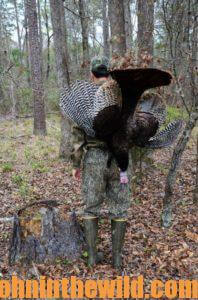 “If I call to a turkey in his safety zone, I’ll use a single reed call with a soft rasp in it. You can blow it very soft and low and make the calls of a disinterested hen. All I’m trying to do with my calling is to get that gobbler to stick his head up over a bank or walk 10 or 15 steps closer to me.
“If I call to a turkey in his safety zone, I’ll use a single reed call with a soft rasp in it. You can blow it very soft and low and make the calls of a disinterested hen. All I’m trying to do with my calling is to get that gobbler to stick his head up over a bank or walk 10 or 15 steps closer to me.
Hunting this kind of tom will require a double dose of patience on the part of the hunter. Just remember – everyone who has been impatient with this bird hasn’t been able to take him. Patience is your biggest ally. This turkey may take you on a long walk. Also you may have to remain motionless for an extended time. But that’s the price you pay when you accept the challenge of hunting a walking and talking turkey. If this turkey had been easy to take, the fellow who had the first load of shot in the bird would have bagged him. Nine out of 10 of the turkeys I’ve finally bagged that have acted this way have had old shot wounds in them. I like to hunt walking, talking turkeys because not just any hunter can take them.”
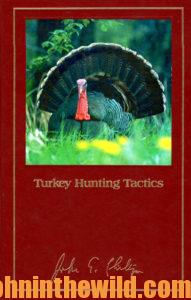 To learn more about turkey hunting, check out John E. Phillips’s book, “Turkey Hunting Tactics,” at https://www.amazon.com/gp/product/B007PK9B2G/ref=dbs_a_def_rwt_hsch_vapi_taft_p2_i9
To learn more about turkey hunting, check out John E. Phillips’s book, “Turkey Hunting Tactics,” at https://www.amazon.com/gp/product/B007PK9B2G/ref=dbs_a_def_rwt_hsch_vapi_taft_p2_i9
that’s available in Kindle, print and Audible versions. You may have to cut and paste this link into your browser. (When you click on this book, notice on the left where Amazon says you can read 10% of this book for free and hear 10% for free). To learn more about other turkey books by John E. Phillips, go to www.amazon.com/author/johnephillips.
Tomorrow: Turkeys That Swim with Paul Butski

